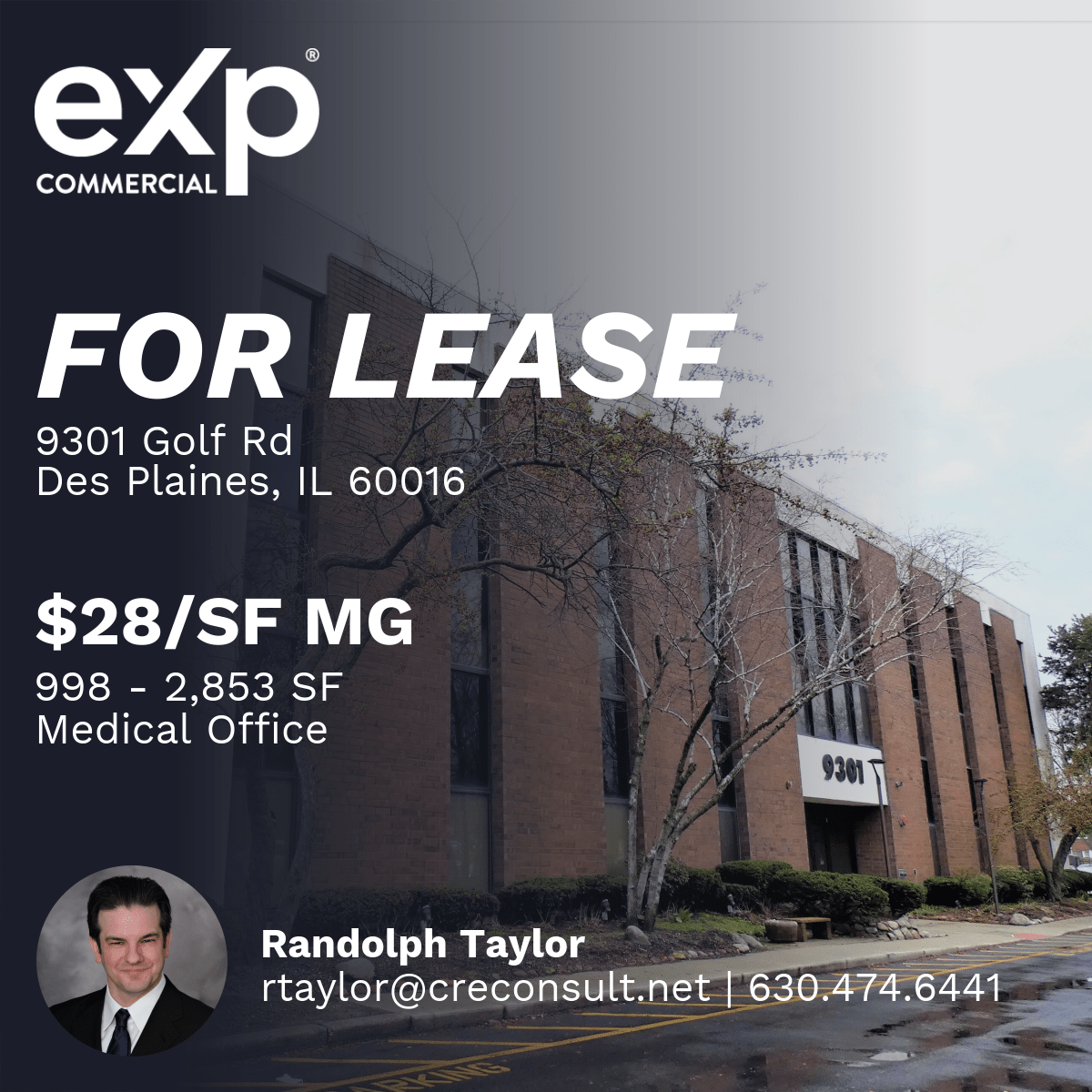
Commercial real estate is the US's third most valuable asset class, right behind stocks and bonds. With an estimated market value of about $17 trillion, it’s understandable why many investors are adding commercial real estate to their investment portfolios.
Let’s take a quick look at commercial real estate basics, including commercial real estate types and asset classes, and the best opportunities for commercial real estate investing this year.
What Makes Real Estate Commercial?
Commercial real estate (CRE) is used for business or investment purposes and is usually rented to tenants to generate income. CRE is a massive asset class and includes everything from single storefronts and apartment buildings for sale to large multi-tenant office buildings and industrial distribution centers.
Multiple income streams are among the most significant advantages of investing in a multi-tenant commercial real estate building. That means the property still generates cash flow if one unit goes vacant.
Commercial real estate prices are generally higher than a residential rental property, so there is less competition from other investors. CRE investments can also be more management-intensive, with larger commercial properties usually having an on-site property manager and leasing office.
Commercial Real Estate Classes
Commercial real estate is categorized into one of three groups or classes:
- Class A property is newer buildings with the best amenities and highest rents in the best locations.
- Class B property is older with average amenities at at-market rents, often attractive to value-add investors for renovation or repositioning.
- Class C property is the oldest, with minimal amenities and below-market rents, usually with obsolete floorplans and in need of significant maintenance.
It’s important to note that CRE property classes are market-specific. For example, a Class A office building in Tulsa might be considered a Class C property in a more urbanized market like San Francisco.
Main Types of Commercial Real Estate
Commercial real estate properties are generally placed into one of five main types, according to the 2021 US Real Estate Market Outlook from CBRE and the Appraisal Institute’s Property Use Classification System.4,5
Office
- Central Business District (CBD)
- Suburban Office Business Park
- Creative/Loft
- Medical
- General Purpose
- Research and Development
According to CBRE, suburban office markets are forecast to grow faster than office buildings in a central business district (CBD). Business-friendly office markets such as Raleigh-Durham, Nashville, Tampa, Phoenix, and Dallas-Fort Worth should perform best for investors and tenants looking to rent office space in 2021.
Industrial
- Industrial Business Park
- Warehouse – distribution, refrigerated/cold storage, lumber yard, general-purpose
- Flex Industrial Space – reconfigurable with up to 85% office space
- Manufacturing – light, heavy, high tech
- Processing – food, minerals, refinery, solid wastes
- Research and Development
- Communication and Data Center
E-commerce will continue to drive the demand for industrial space, according to CBRE. Commercial real estate investors can expect more retail-to-industrial conversions as industrial occupiers search for last-mile delivery solutions.
Industrial markets to watch include Phoenix, Las Vegas, Salt Lake City, Texas, and Southeastern CRE markets such as Atlanta, Charleston, and Central Florida.
Retail
- Automotive
- Day Care Facility
- Laundromat
- Restaurant and Bar
- General Storefront/Street Retail
- Convenience Store
- Strip center
- Neighborhood Center
- Community Shopping Center
- Regional Center
- Super-Regional Center/Mall
- Specialty Retail Center
Retail store closures will likely continue this year, creating opportunistic investment opportunities in many retail markets. Adaptive reuse and conversion of Class B and C malls into higher and better uses will keep accelerating.
CBRE lists Phoenix, Austin, Denver, Charlotte, and St. Louis as some of the best retail markets to watch for commercial real estate investment.
Multifamily
- Multiple Units – buildings with more than four units, including garden, mid-rise, and high-rise apartments
- Student Housing – dormitory, fraternity/sorority, and both on-campus and off-campus housing
- Senior Living – independent and assisted living, retirement community, skilled nursing facility
- Group Housing – for people with disabilities or criminal backgrounds to reintegrate into society.
Multifamily vacancy rates should remain relatively low in 2021, with rents rising in many markets as more households rent rather than own. Affordable Class B and C workforce housing will remain in short supply.
Suburban multifamily assets in the Midwest and Southeast regions were recommended as the best multifamily investment opportunities by CBRE. Particularly promising cities include Indianapolis, Memphis, Cleveland, Kansas City, and Louisville.
Hotels
- All Suites
- Bed and Breakfast
- Casino Hotel
- Convention Hotel
- Economy Hotel/Motel
- Extended Stay
- Full Service
- Limited Service
- Luxury
- Resort and Spa
Normal hotel occupancy levels are not expected to return until 2023, with higher chain hotels suffering the most due to their dependency on business and group travel. Hotels and lodging facilities in drive-to destinations are predicted to recover the fastest by CBRE. Rural and interstate hotels and lodging facilities in small metros and rural areas in drive-to destinations may offer the best opportunities for investing in hotels.
Alternative Commercial Real Estate Types
With an asset class as large and varied as commercial real estate, some CRE properties are difficult to categorize into one of these five main types. Alternative commercial real estate properties have distinct, specialized uses or a combination of the aforementioned ones.
- Mixed-Use properties combine two or more uses, such as retail and office space on the first level, with multifamily units on the upper floors.
- Unique Purpose properties have a niche or purpose-built use and include parking lots and garages, self-storage facilities, sports stadiums, theaters, amusement parks, churches, and government buildings.
- Data Centers are colocation facilities leased to large cloud service providers and content providers. They have rapidly developed into a new subclass of alternative commercial real estate and are ideal for CRE investors looking for high-quality assets leased to long-term credit tenants.
Where to Find Commercial Real Estate Listings
Some commercial real estate property types will grow faster than others, although each type offers CRE investors unique opportunities. High-rise urban offices may be impacted more by employees working from home, while suburban office buildings closer to home better fit the hub-and-spoke model.
Retail property in markets such as Las Vegas is performing well, while other retail types offer investors the opportunity for repositioning to use better. The same is true of hotels, with hospitality and lodging properties in drive-to locations providing the best investment opportunities.
In most markets, industrial and multifamily commercial real estate performed exceptionally well and will likely continue to do so even during an uncertain economy.
Source: The Basics of Commercial Real Estate Property Types | Crexi Insights
https://www.creconsult.net/market-trends/the-basics-of-commercial-real-estate-property-types/





